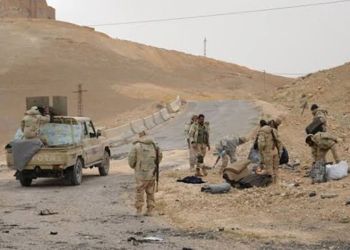This post is also available in:
![]() العربية
العربية
Cars carrying displaced civilians, empty streets, and cut electricity, in an atmosphere dominated by fear in the city of Hasakah since Daesh began its operation in Ghweran prison.
The organization focused its goal on liberating more than 5,000 members to arm them and rise again to achieve its dream of a resurgence. But who pays the price? A family sat at night listening to the sounds of clashes in fear and terror, and children spent their hours at the sound of booby-traps and heavy weapons. Families were threatened by Daesh cells when they stormed their homes and used them as human shields in the clashes.
What happened in the industrial prison is a microcosm that suggests to us what the cities east of the Euphrates will experience if the organization is able to rise again, for Daesh did not enter an area without emerging from it destroyed and turned into rubble, in order to realize a dream that was not achieved previously and will not be achieved in the future.
Despite the strength of what the organization achieved in the media, the results it has achieved so far are only 5 members who escaped from prison out of 5000 who dreamed of liberating them. Civilians are experiencing insecurity and a premonition of fear and terror in the neighborhoods of Ghweran and Al-Zohour.
Daesh did not succeed in its operation, but it turned Hasaka into a prison, closing its doors to its residents, closing its entrances and exits, and imposing a curfew on some of its neighborhoods. It may bring back to our mind the stereotype that we are Daeshcells is a dark and bleak prison and life without it is inevitably better











